 We previously promised that we would be showing you more of this fascinating little book, and here it is!
We previously promised that we would be showing you more of this fascinating little book, and here it is!
The book in question is the 1950 Soviet book Простейший коротковолновый приемник (The simplest short-wave receiver) by V.A. Egorov, UA3AB, part of the series Библиотека юного конструктора (Library of the young designer), a series of small books published between 1937 and 1964 showing various construction projects, many related to radio.
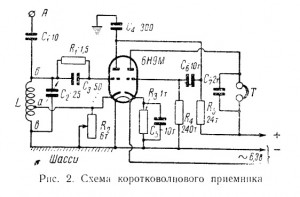 After a few pages of introduction to shortwave radio, the book jumps right into a description of the circuit. As the title of the book promises, the receiver is simple but elegant. It uses a 6Н9М dual triode (that’s Cyrillic text, so you would read it as 6N9M), one half being used as regenerative detector, with the other half as audio amplifier. The set employed plug-in coils, and was designed to tune the 40 and 20 meter ham bands. (For those wishing to duplicate the set with Western parts, the tube appears to be equivalent to a 6SL7.)
After a few pages of introduction to shortwave radio, the book jumps right into a description of the circuit. As the title of the book promises, the receiver is simple but elegant. It uses a 6Н9М dual triode (that’s Cyrillic text, so you would read it as 6N9M), one half being used as regenerative detector, with the other half as audio amplifier. The set employed plug-in coils, and was designed to tune the 40 and 20 meter ham bands. (For those wishing to duplicate the set with Western parts, the tube appears to be equivalent to a 6SL7.)
The neatly constructed final product is shown below:

If the book were published in the West, it would probably end there, along with a reminder that you needed to go to your friendly radio dealer or even drug store to buy a B battery for the plate voltage, and an A battery to light the filament. But in the Soviet Union, it probably wasn’t a sure thing that you could find the battery. So the book describes four methods to get the power.
The first two methods are power supplies that the reader could build, both of which are more complex than the receiver itself. Both rely mostly on factory-made parts, but the second set of plans includes instructions for winding the filament transformer at home, with the B+ being rectified directly from the AC line:

 But even if the aspiring young Soviet radio fan wound his own transformer, getting the rectifier tube could be problematic. Therefore, the third method of powering the receiver could be very attractive. Chances are, the home was already equipped with a broadcast radio, and the broadcast radio had a perfectly good power supply inside. So the third method involves simply tapping into it by unplugging one of the tubes, and powering the shortwave set right from the socket. The young SWL just needed to locate the 6Ф6 tube in the family radio, remove the tube, plug his radio into the socket, and his radio would come to life! Presumably, the other family members would be supportive of the SWL’s new hobby, and forego listening to the broadcast radio as he tuned the short waves.
But even if the aspiring young Soviet radio fan wound his own transformer, getting the rectifier tube could be problematic. Therefore, the third method of powering the receiver could be very attractive. Chances are, the home was already equipped with a broadcast radio, and the broadcast radio had a perfectly good power supply inside. So the third method involves simply tapping into it by unplugging one of the tubes, and powering the shortwave set right from the socket. The young SWL just needed to locate the 6Ф6 tube in the family radio, remove the tube, plug his radio into the socket, and his radio would come to life! Presumably, the other family members would be supportive of the SWL’s new hobby, and forego listening to the broadcast radio as he tuned the short waves.
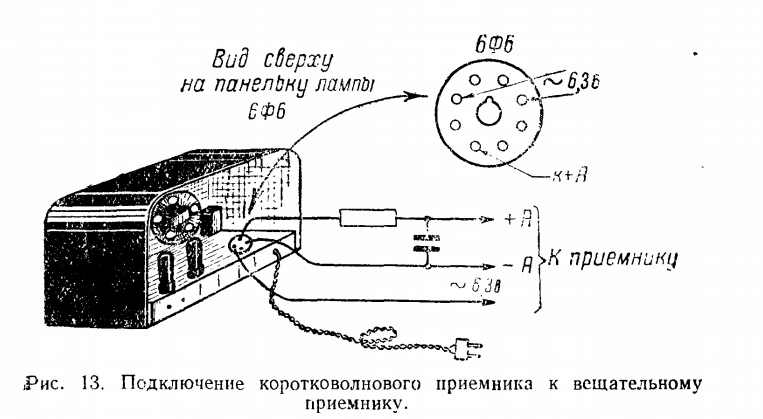
The fourth method recognizes that some builders might have enough connections so that they can simply go out and buy the battery. In this case, a БАС-80 battery is required.
After recommending an antenna of 25-30 meters in length, the book jumps into some discussion of how to tune the amateur bands. It notes, for example, that the 40 meter band can be expected to yield stations about 900-1000 kilometers away, with 20 meters pulling in stations more than 1000 km distant. It explains some of what the listener will hear. For example, in addition to listing some foreign call sign prefixes, it notes that UA call signs are in the RSFSR, UB calls are from Ukraine, and so forth.
It mentions some example SWL call signs, and even shows a reproduction of an SWL card from an SWL in Belarus, with the call sign of UC-2-2002, complete with the familiar address of Box 88 Moscow. Presumably, the text explains exactly how the young listener goes about getting such a call sign and getting his SWL cards printed, but I’m unable to read the text.
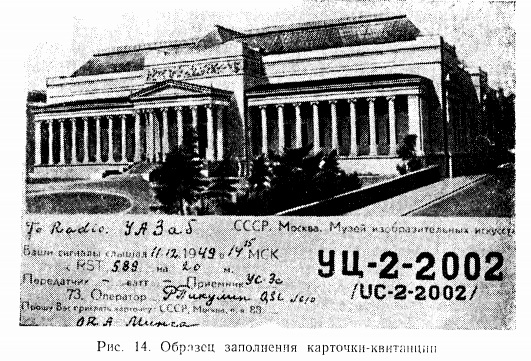
The book concludes with a table showing common Q-signals, common CW abbreviations, and the following listing of Soviet and European call sign prefixes.
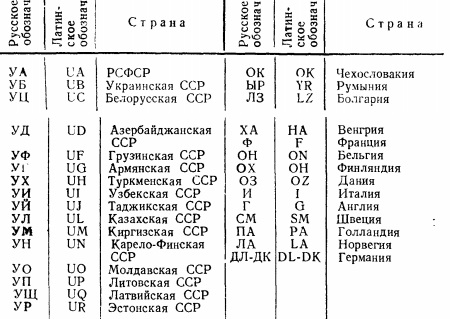
The UA-UR prefixes for the various Soviet republics are listed at the left, with the right column showing the prefixes of Czechoslovakia, Romania, Bulgaria, Hungary, France, Belgium, Finland, Denmark, Italy, Britain, Sweden, Holland, Norway, and Germany.
The SWL card shown above is for reception of UA3AB, and a search for that call sign reveals that it was held by the author of the book, V.A. Egorov.
You can read more about this receiver at this link at the site of VA3ZNW (ex-UA3ZNW, ex-UA3-117-386). He has a fascinating story of building this set in the 1970’s at the age of 13, and using it to tune in the Voice of America and Radio Liberty. Even though the Soviets extensively jammed those stations, they didn’t bother jamming them on 16 and 13 meters, since Soviet receivers didn’t tune those bands. But with the little one-tube homebrew set, they came in loud and clear.
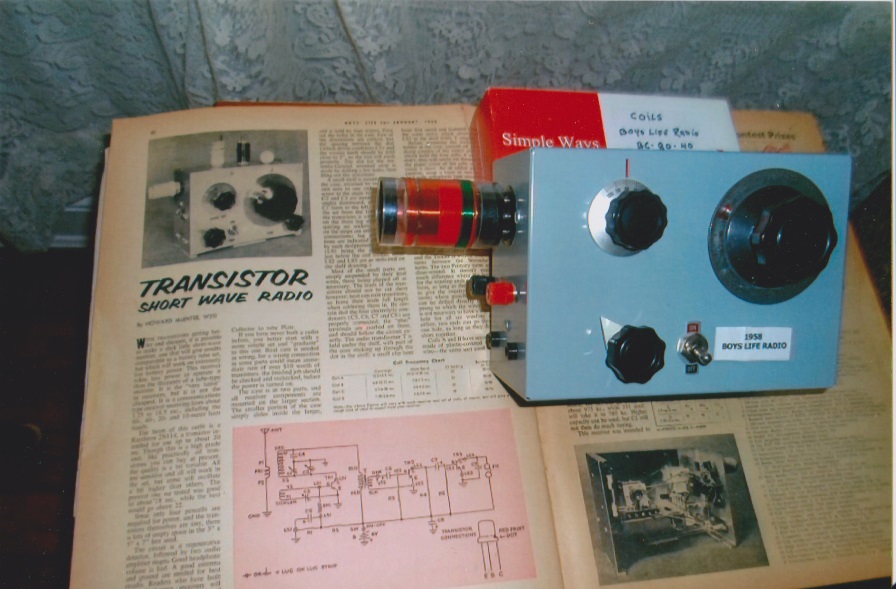 We recently wrote about this three-transistor regenerative receiver from the January 1958 issue of Boys’ Life magazine.
We recently wrote about this three-transistor regenerative receiver from the January 1958 issue of Boys’ Life magazine.


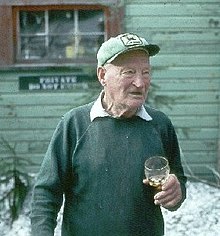

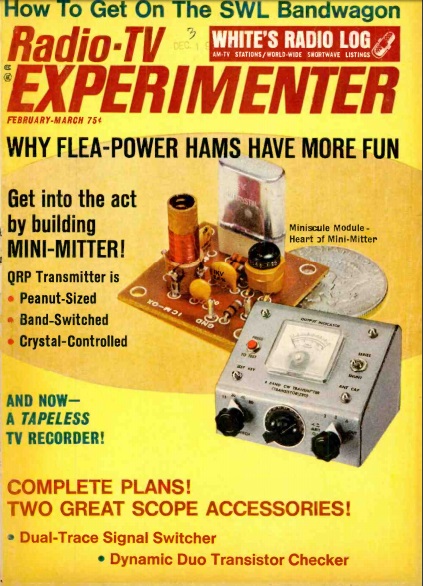
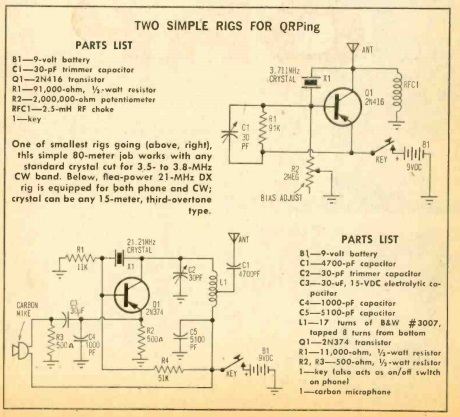
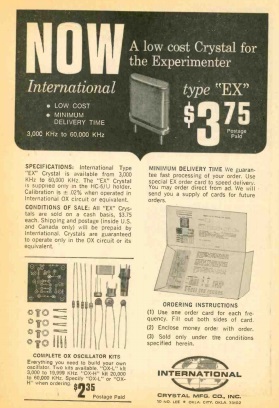

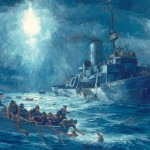
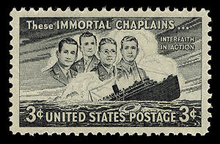
 We always take a break from our scheduled programming for the major holidays, and Groundhog Day is certainly one of the major holidays.
We always take a break from our scheduled programming for the major holidays, and Groundhog Day is certainly one of the major holidays.







